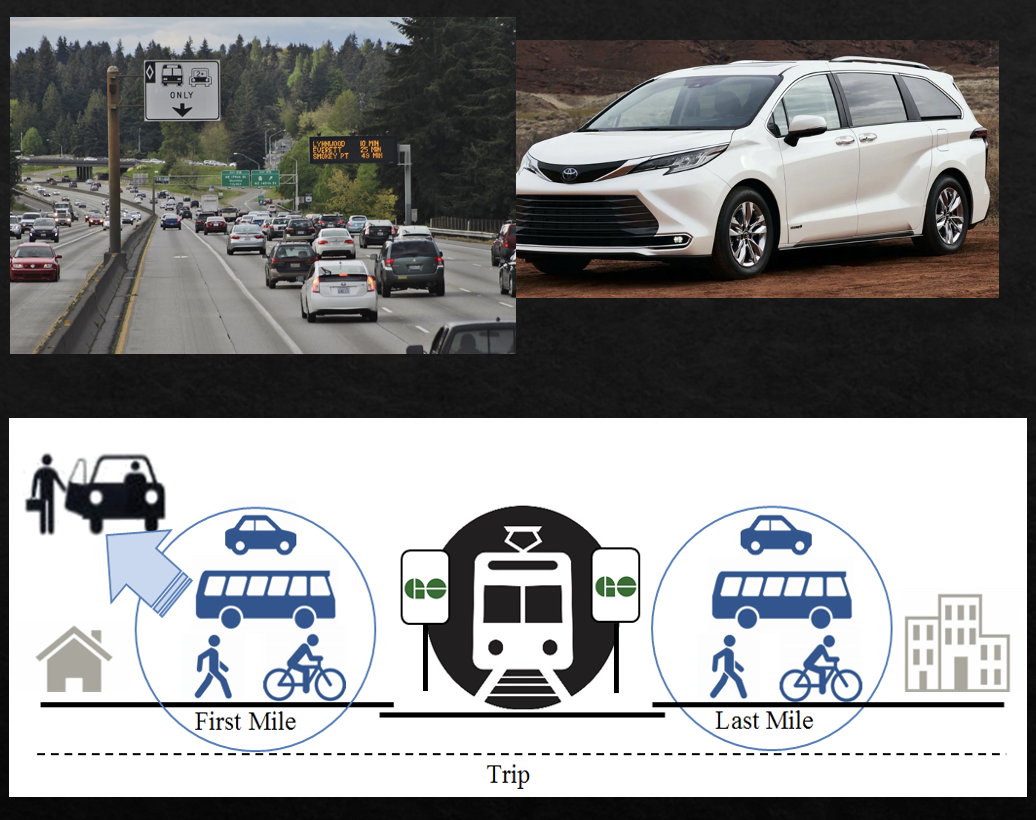Dr. Bilal Farooq’s Op-Ed in The Hill Times on On-Demand Transit
November 14, 2022

Improving Canadian public transit systems through the sustainable adoption of emerging technologies and services.
Original artcile on The Hill Times.
The government of Canada’s pledge to invest $14.9 billion in public transit over the next eight years is a unique opportunity for municipalities to improve their public transit systems, while focusing on increasing the user base, decreasing the carbon footprint, and providing equitable and inclusive access. Adopting emerging technologies and services has the potential to achieve these goals in a sustainable manner.
On-demand public transit (ODT) is an emerging service that does not follow a fixed route and responds to the spatio-temporal changes in demand by adjusting the fleet size, route, pricing, and vehicle location. In recent years, fixed-price ODT has been successfully adopted to accommodate low ridership densities in several smaller Canadian municipalities, e.g., Town of Innisfil and City of Belleville in Ontario and Town of Cochrane in Alberta. In some cases, ODT has shown great promise as a first/last mile access solution, e.g., the Innisfil ODT is being used for access to the GO Transit regional train/bus network. ODT adopters have reported improved level of service, increased ridership, and savings on infrastructure and operations cost.
Investment from the federal government can encourage public transit agencies in large urban areas, e.g., Toronto Transit Commission (TTC) to learn from these early adopters and consider hybrid solutions, where the core of the system remains high frequency fixed route transit and low ridership density neighbourhoods can be better served with ODT as a first/last mile access mode.
For the sustainable adoption of ODT services, there is a strong need to develop open guidelines that Canadian municipalities can use in the planning, design, and operations phases. New passenger specific key performance indicators need to be developed that consider variables like wait-time, detour-time, vehicle occupancy per kilometre travelled, and greenhouse gases emitted per passenger kilometre.
Cyber infrastructure plays a vital role in the operations of ODT systems. The backend software works in real-time to optimize the matching of ride-requests to vehicles, fleet size, and vehicle repositioning based on demand prediction. Currently, this infrastructure is primarily developed and offered by a handful of companies. The offered infrastructure remains a black box with limited degree of control available to municipalities. Access to operational data generated by the system may also be limited. There is thus a strong need to invest in the development and maintenance of an open-source software stack for the cyber infrastructure that municipalities can easily customize to their requirements. This is an area where universities and government researchers can take a leading role.
The ODT system typically relies on passengers’ ability to connect to the service via internet to request a ride. The new investments must therefore consider an equal and inclusive access to ODT system by providing alternatives, such as dial-a-ride and drop-in pickup/dropoff stops. The increased level of connectivity in these emerging services also means that municipalities must consider solutions to ensure the privacy and security of passengers’ data.
Investment in vehicle automation and electrification can improve safety and convenience and drastically decrease tailpipe emissions in public transit systems. However, for the sustainable adoption of these technologies at scale, there is a strong need to invest in the supporting infrastructure and expedite the maturity of these technologies. There are several low-speed automated scuttle pilots demonstrated across Canada, but the reliable deployment of highly automated vehicles in Canadian public transit systems remains a distant reality. Priority must be given to an evolutionary approach where the level of automation is gradually improved and sustained through technology that is best suited for Canadian weather, road conditions, and system requirements. In case of electric vehicles, the focus must be on first enabling the Canadian municipalities to develop the underlying infrastructure, such as a charging network and grid capacity. The life cycle impact should also be considered when adopting electric vehicles in public transit.
While micro-mobility options, such as e-scooters can greatly improve local mobility, their adoption has been associated with the decrease of trips by walking and public transit. When municipalities consider the adoption of micro-mobility, they may consider implementing policies that result in a decrease of car-based local trips and have a lower impact on public transit and walking trips.